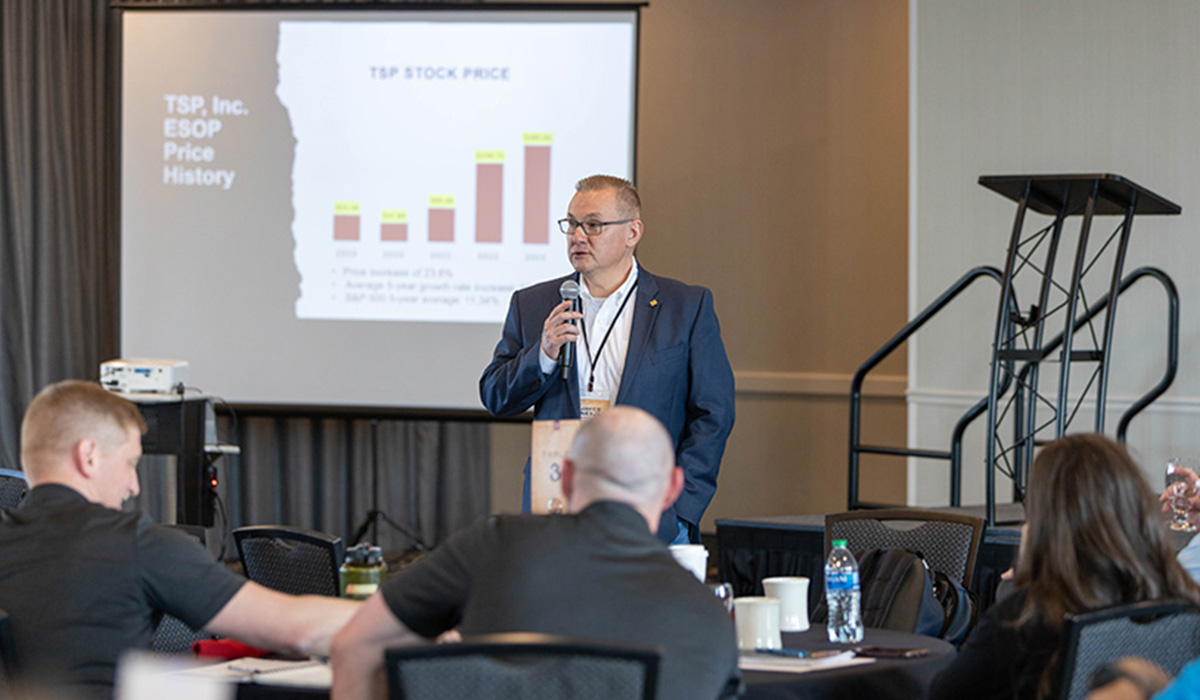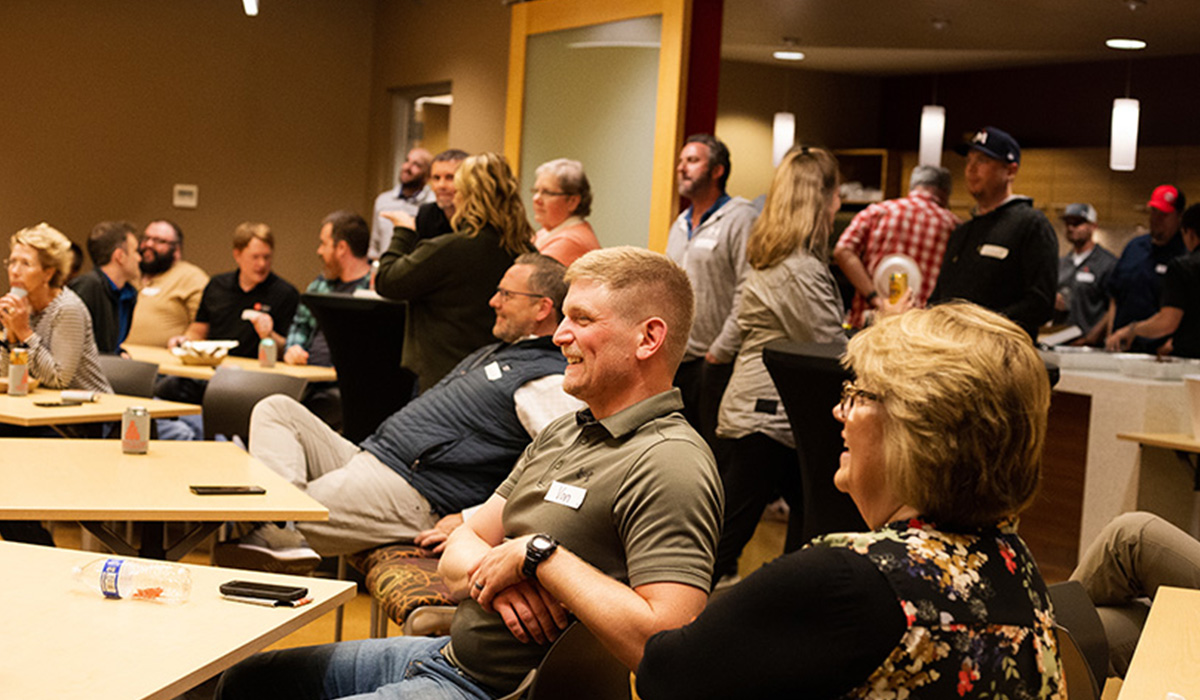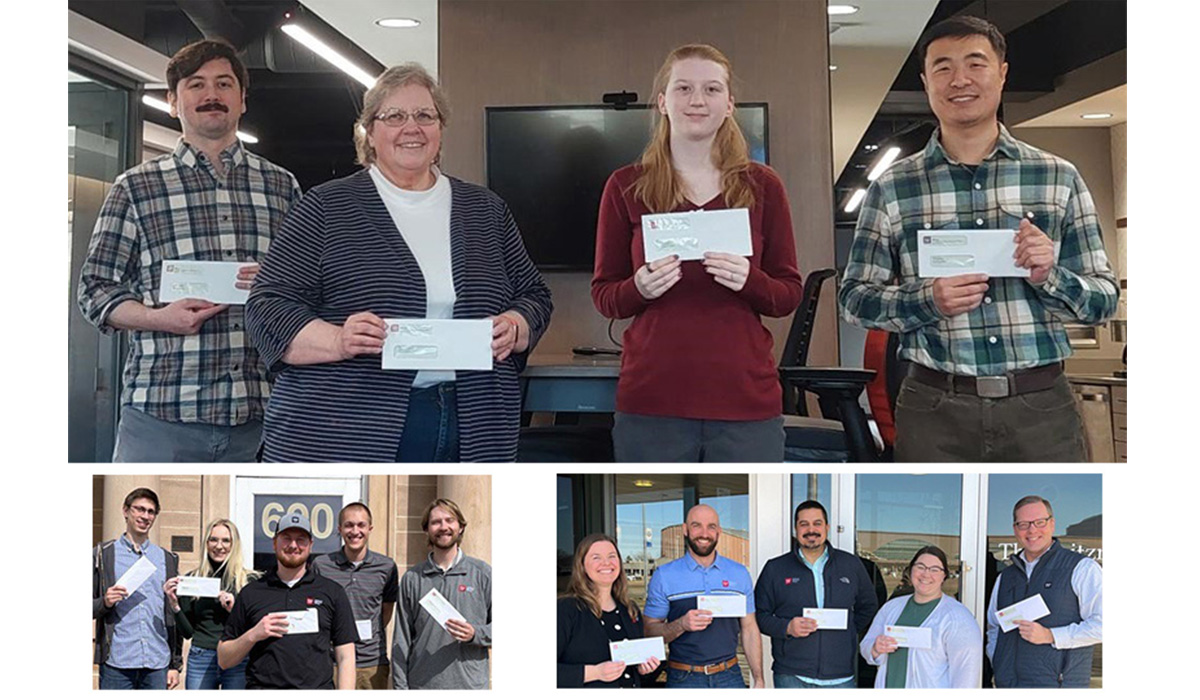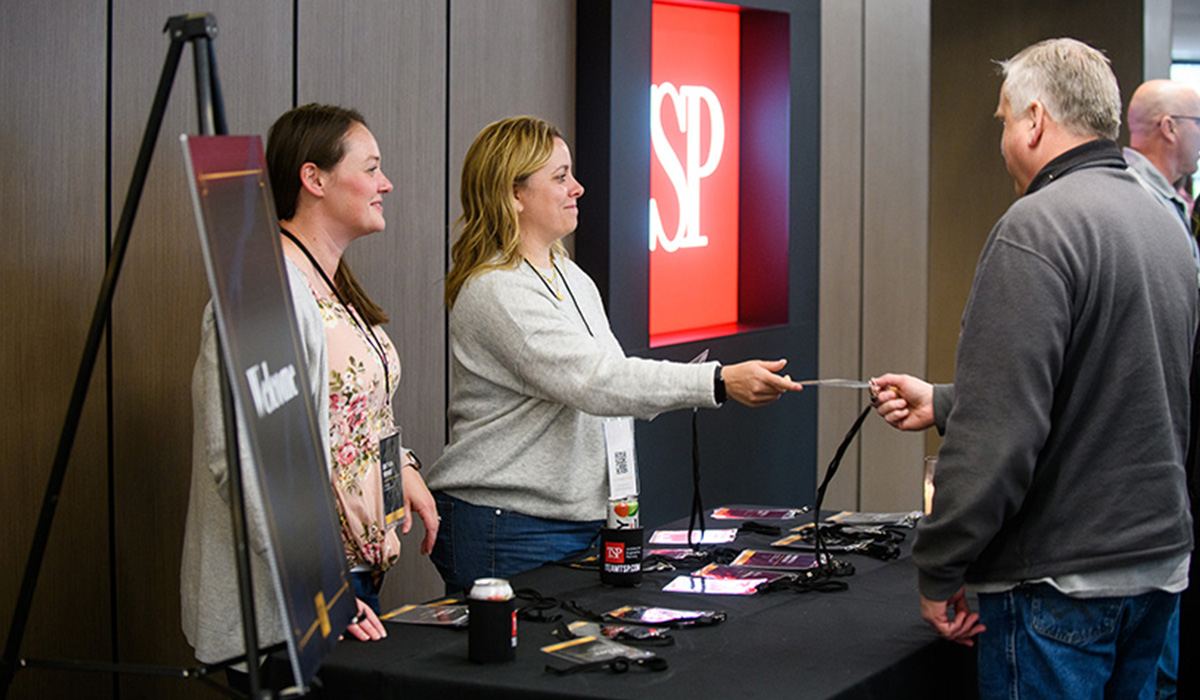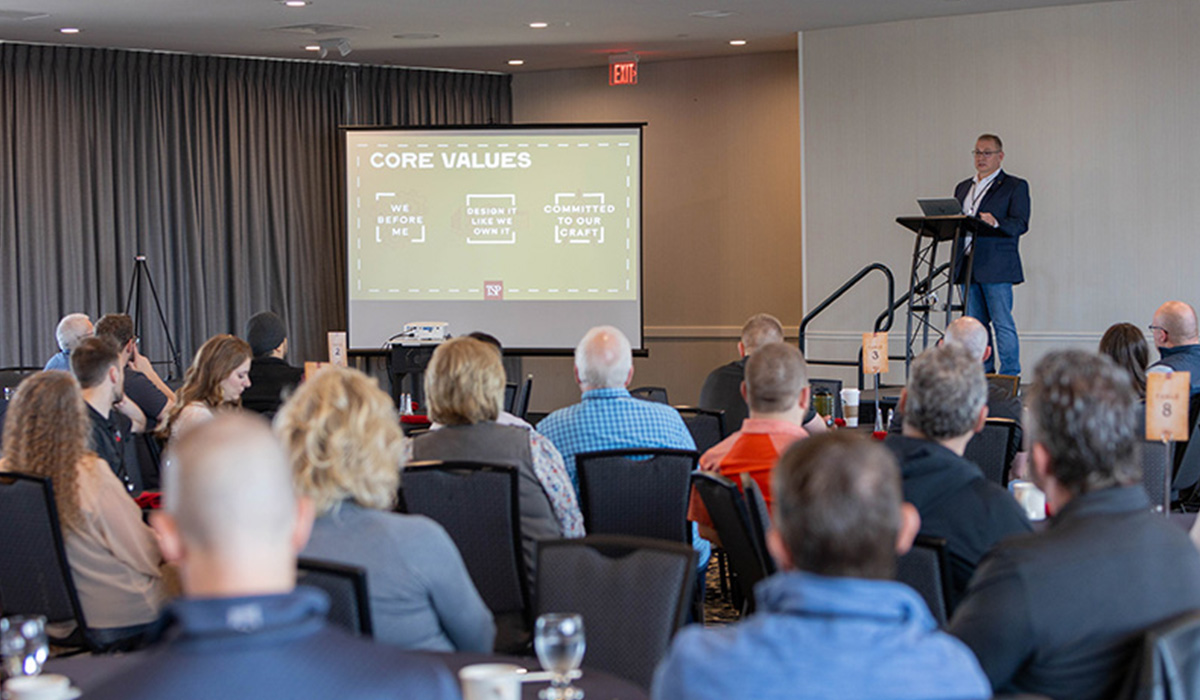Each October, Employee Ownership Month is observed to promote the wide-ranging benefits that employee ownership offers to employees, companies, and local communities.
TSP Inc., which will mark 95 years in business next year, has long been an employee-owned company.
For most of those nine-plus decades, ownership at the architecture, engineering, and planning firm included a smaller group of company leaders who were invited to purchase shares.
But in 2019, TSP became an employee stock ownership program company, which allows employees to become owners without the need for an up-front personal investment.
Company shares are held in an employee stock ownership trust until the employee retires or leaves the organization. An ESOP is a tax-advantaged retirement plan, and the asset is the stock of the company where the employee works.
In addition to recognizing the value of employee ownership, TSP leaders are taking time to celebrate the five-year ESOP anniversary.
“At the midpoint of a mature ESOP, I am very happy with where we are at,” CEO Jared Nesje said.
Company leaders point to a share price that has tripled since 2019 but also the impact of cultural achievements like greater transparency and lower turnover that go together with financial successes.
A key aspect of transparency is making sure all team members have access to financial information.
“One of the goals is making everyone aware of where we are at, tracking toward our financial goals, and trying to do that in a way that is easy for people to see,” director of finance Brenda Moore said.
Information is communicated at quarterly town hall meetings, in a monthly financial infographic, and various other channels.
“I also believe that transparency regarding board meetings is essential, and our leadership does a great job of sharing that information, along with insights from the leadership aspect,” director of human resources Kari Kiesow said.
TSP reached 100 percent ESOP status two years ago.
As part of the ESOP, a companywide bonus, formally known as the at-risk compensation plan, is available to TSP employees who work an average of at least 30 hours per week.
Annual bonus payouts are funded once TSP achieves firmwide profit goals and specific measurements are met.
“Part of the reason that I was really excited for the 100 percent ESOP is there are now no other owners,” Moore said.
“Every dollar that we earn is for the health of our company: either growth in ESOP or back in our at-risk program,” she said.
“I was really looking forward to that aspect of being an ESOP and being able to discuss it in a way that truly reflects that it’s our company.”
According to the National Center for Employee Ownership, there are 25 ESOPs in privately held companies in South Dakota, with 16 of the state’s communities including at least one ESOP company.
Professional services and manufacturing each represent an estimated 20 percent of the ESOPs in South Dakota.
While there are several reasons to become an ESOP, succession planning, tax benefits, and employee engagement were key factors for TSP, Moore said.
“But then as you look at it, it is just a great benefit for our team,” she said.
“We’re not asking people to do anything more than a great job, and in return they are receiving a wealth-building account for doing their job well.”
Communicating about an ESOP can be challenging because of complex details, and it can be initially difficult to get past a “too good to be true” mindset among some employees.
“That simple statement of coming in and committing to doing good work each day, that is who we are as people, but I think that’s the hard part that can create a disconnect,” Nesje said.
“There’s no catch. For us, it’s welcome aboard, and thanks for your commitment to making TSP better because it makes you better.”
In October, team members from all TSP offices gathered in Sioux Falls for two days to kick off employee ownership month and reinforce a commitment to TSP’s core values: “We Before Me, Design It Like We Own It, and Committed to Our Craft.”
The social time, panel discussions, review of lessons learned, and breakout sessions emphasized the vital role that all employees play in the company’s success.
Nesje believes that similar firmwide gatherings will help increase the ownership mindset, leading to more engagement and greater success.
“We’re not done yet,” Nesje said. “We’re building for the next 100 years.”
